Elon Musk’s Neuralink raises $600M at $9B valuation
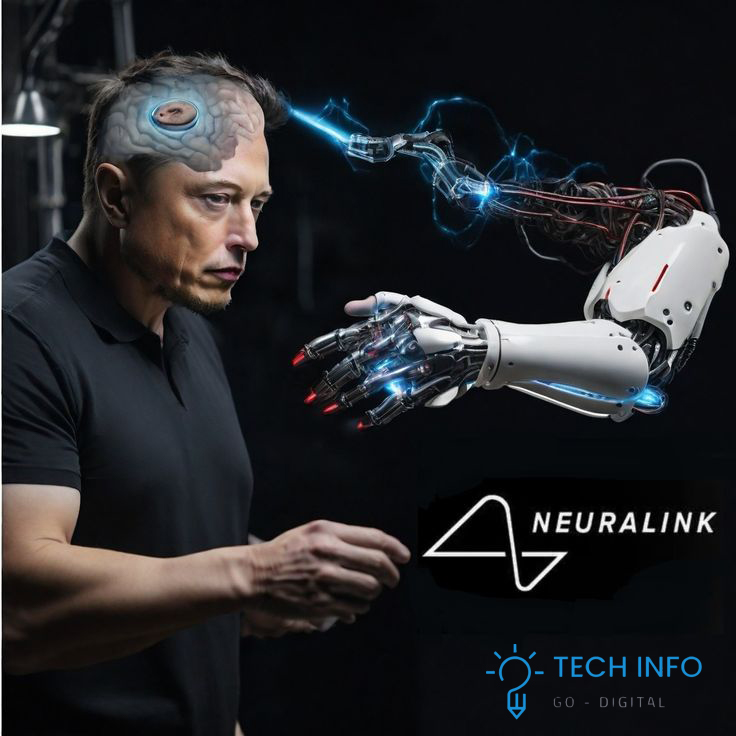
Introduction Neuralink’s $600M Funding Milestone: Redrawing Humanity’s Technological Frontier The neurotechnology sector witnessed a seismic shift this week as Elon Musk’s Neuralink Corporation announced a $600 million Series D funding round at a $9 billion valuation. This landmark investment – one of the largest single rounds in neurotech history – arrives as the company prepares for commercial deployment of its N1 brain-computer interface (BCI) system. The financing positions Neuralink to accelerate human trials, expand manufacturing capabilities, and develop next-generation neural implants that could redefine human-machine interaction within this decade.Elon Musk’s Neuralink raises $600M at $9B valuation I. The Neuralink Vision: From Sci-Fi to Clinical Reality Founded in 2016, Neuralink operates at the intersection of neuroscience, robotics, and artificial intelligence. The company’s core technology centers on ultra-high bandwidth BCIs designed to create a symbiotic relationship between biological and artificial intelligence. TheElon Musk’s Neuralink Recent FDA approvals for limited human trials in paralysis treatment (2024) and early-stage epilepsy management (2025 Q1) demonstrate growing regulatory confidence. The company’s PRIME Study (Precise Robotically Implanted Brain-Computer Interface) has enrolled 12 quadriplegic participants across three U.S. medical centers as of May 2025. II. Decoding the $9B Valuation: Investor Confidence Breakdown This funding round’s architecture reveals strategic priorities: Investment Allocation Percentage Key Objectives Clinical Trials Expansion 35% Quadruple trial sites to 48 by 2026 Manufacturing Scale-up 30% Achieve 10,000 implants/year capacity R&D Acceleration 25% Develop visual cortex interface prototypes Regulatory Compliance 10% Global certification pathways Notable investors include: The valuation multiple (15x projected 2026 revenue) reflects confidence in Neuralink’s first-mover advantage in the $37B neuroprosthetics market projected by 2030 (Grand View Research). III. Transformative Applications: Beyond Medical Miracles A. Medical Frontiers (2025-2030) B. Human Enhancement Horizon (2030+) C. AI Symbiosis Musk’s vision of “consensual telepathy” aligns with Neuralink’s AI alignment research division, developing neural feedback loops to prevent AI value drift. IV. The Thorny Path: Technical and Ethical Challenges Technical Hurdles Ethical Quagmires Recent controversies include FDA scrutiny over primate trial disclosures (2023) and neuroethicist protests at trial sites. Neuralink’s response includes establishing an independent Neuroethics Board (April 2025) with $10M annual funding.Elon Musk’s Neuralink raises $600M at $9B valuation Elon Musk’s Neuralink V. The Neurotech Arms Race: Competitive Landscape Neuralink’s funding dwarfs competitors but faces formidable rivals: Company Technology Funding Stage Synchron Stentrode $145M FDA-approved stroke rehab Paradromics Connexus Array $85M Chronic pain trials Blackrock Neurotech NeuroPort $65M 35+ years human experience Facebook Reality Labs Wrist-based BCI N/A Consumer AR integration Neuralink’s edge lies in wireless operation and Musk’s vertical integration capabilities through Tesla (power systems) and SpaceX (advanced materials).Elon Musk’s Neuralink raises $600M at $9B valuation Conclusion: The Neuralink Inflection PointThis funding round accelerates three critical timelines: As Neuralink prepares its Fremont manufacturing facility for mass production, the world stands at the threshold of a new era in human evolution. While technical and ethical challenges remain formidable, this $600M vote of confidence suggests the neural revolution isn’t coming – it’s being surgically implanted. Call to Action Follow Neuralink’s progress through their official trial updates and participate in the neuroethics discourse shaping our collective future. The conversation about what it means to be human in the age of machine integration starts now – and it’s happening directly inside our skulls.Elon Musk’s Neuralink raises $600M at $9B valuation
Apple CEO reportedly urged Texas’ governor to ditch online child safety bill

Apple CEO Urges Texas to Drop Child Safety BillApple CEO Urged Texas Governor to Ditch Online Child Safety Bill: A Deep Dive In a recent development that has stirred debate among tech giants, policymakers, and child safety advocates, Apple CEO Tim Cook reportedly urged Texas Governor Greg Abbott to abandon a proposed online child safety bill. The legislation, aimed at protecting minors from harmful content and exploitation on digital platforms, has faced pushback from major tech companies, including Apple. This blog post explores the details of the bill, Apple’s stance, the implications for online safety, and the broader debate over balancing privacy, corporate interests, and child protection. Understanding the Texas Online Child Safety Bill The proposed Texas legislation, similar to other state-level bills like California’s Age-Appropriate Design Code, seeks to impose stricter regulations on digital platforms to protect children from harmful content, data collection, and online exploitation. Key provisions of the bill may include: Supporters argue that such measures are necessary to combat rising cyberbullying, mental health issues linked to social media, and online predation. However, critics, including major tech firms, claim these regulations could infringe on privacy, stifle innovation, and create compliance challenges. Apple’s Opposition: Why Did Tim Cook Intervene? According to reports, Apple CEO Tim Cook personally lobbied Governor Abbott to oppose the bill. While Apple has positioned itself as a leader in user privacy and security (e.g., with features like App Tracking Transparency), its resistance to this legislation raises questions. Possible Reasons Behind Apple’s Stance: Cook’s Reported Argument: Sources suggest Cook emphasized that the bill could: The Broader Debate: Child Safety vs. Privacy & Innovation This situation highlights a growing tension between: Pro-Regulation Perspective: Anti-Regulation Perspective: Potential Consequences if the Bill Is Scrapped If Apple and other tech lobbyists succeed in stopping the bill: Alternatively, if the bill passes despite opposition: Where Should the Line Be Drawn? The reported intervention by Apple’s CEO underscores the delicate balance between protecting children online and preserving digital privacy and innovation. While child safety is a universal priority, the methods to achieve it remain hotly contested. Key Takeaways:
Signal’s new Windows update prevents the system from capturing screenshots of chats

Signal’s New Windows Update Blocks Screenshots of Chats: A Leap Forward in Messaging Privacy In an era where digital privacy is under constant threat, Signal has once again demonstrated its unwavering commitment to secure communication. The latest Windows update from Signal introduces a powerful new feature: screenshot prevention for chats. This seemingly small update has sparked significant conversations among users, cybersecurity experts, and privacy advocates alike. In this blog, we explore what this update entails, why it’s a big deal, how it works, and what it means for the future of private messaging What’s New in the Signal Windows Update? Signal, the privacy-focused messaging platform known for its end-to-end encryption, recently rolled out an update to its desktop app on Windows. This update includes a notable security feature that prevents the operating system from capturing screenshots of open chats. This feature works similarly to the “Screen Security” option already available in the Android version of the app. When enabled, the screen contents of Signal chats are blocked from being recorded or captured using screenshot tools—either manual screenshots or third-party screen recording apps. While this might seem like a minor enhancement, it’s actually a significant move towards safeguarding user privacy Why Screenshot Blocking Matters You might wonder, “What’s so dangerous about screenshots?” After all, it’s just a still image of a conversation. But that’s precisely the issue. Screenshots can be easily taken, stored, and shared without the knowledge or consent of the participants in a conversation. Here are some real-world risks associated with chat screenshots: By blocking screenshots, Signal adds a layer of control and protection for its users, ensuring that their conversations stay private and secure. How Does It Work? The technology behind screenshot prevention on Windows is quite clever. Signal uses an OS-level flag or window property that tells the operating system, “Do not allow this window’s contents to be captured.” This API or system call essentially disables the ability for third-party applications or screen capture tools to access the visual output of the chat window. On Android, a similar technique is used where the app sets a specific flag on the view (FLAG_SECURE), which prevents the screen content from being captured in screenshots or appearing in the list of recent apps. On Windows, the mechanism is different, but the principle is the same—Signal instructs the system to block visual output of the chat window from any software trying to capture it. This is especially useful in work environments or shared computers where users may be concerned about screen-capturing malware or even curious colleagues. Who Benefits From This Feature? This feature is especially valuable to: In short, anyone who uses Signal to communicate sensitive, personal, or confidential information stands to benefit. How to Enable It If you’re using the updated Signal Desktop app on Windows, the feature might be enabled by default. If not, it’s easy to turn on: Once enabled, the app window will not allow any screenshots or screen recordings of your chats. Limitations and Workarounds As with any security feature, it’s important to recognize that no solution is 100% foolproof. Screenshot blocking has some limitations: That said, this feature significantly raises the barrier to casual privacy breaches. It deters the most common and easiest form of conversation leakage—screenshotting. A Bigger Move Toward Secure Messaging A Bigger Move Toward Secure Messaging Signal has always led the way in private communication. From pioneering end-to-end encryption to developing the Signal Protocol used by other apps like WhatsApp and Facebook Messenger, it’s clear that Signal isn’t just another messaging app. It’s a privacy-first platform. This new feature aligns with that philosophy. It reinforces the idea that what you say in a private conversation should stay private—and that includes your screen. Moreover, it may encourage other platforms to adopt similar protections. In today’s climate, where even tech-savvy users are increasingly wary of data exposure, privacy enhancements like these could become industry standards. Final Thoughts Signal’s decision to block screenshots on Windows isn’t just about technology—it’s about trust. By giving users more control over their data, Signal continues to build a platform that respects and protects privacy at every level. This update is a step in the right direction and signals a broader trend in the digital world. Privacy is no longer a niche concern; it’s a fundamental right. And Signal is making sure that right is respected—one feature at a time. Whether you’re an activist, a journalist, a professional, or just someone who values digital dignity, Signal’s latest update is a reason to feel a little more secure in your conversations.
Google tests replacing ‘I’m Feeling Lucky’ with ‘AI Mode’
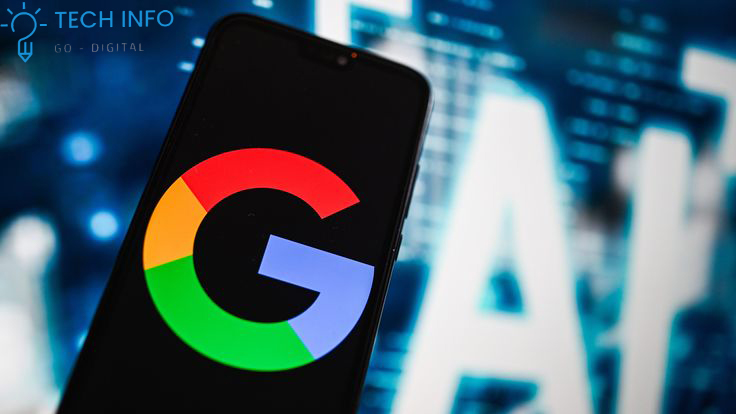
Google Tests Replacing ‘I’m Feeling Lucky’ With ‘AI Mode’: A New Era in Search Experience For over two decades, Google’s iconic “I’m Feeling Lucky” button has been a quirky, nostalgic feature on the search engine’s homepage—a playful nod to a simpler internet. But recent experiments suggest Google is preparing for a dramatic shift: replacing “I’m Feeling Lucky” with a new feature called “AI Mode.” This potential replacement marks more than a cosmetic update—it reflects a larger shift in how people interact with information online. As generative AI becomes more central to search, “AI Mode” could signify the dawn of a new, intelligent interface between users and the web.Google tests replacing In this blog, we’ll explore what “AI Mode” is, why Google might be replacing “I’m Feeling Lucky,” how this ties into the evolution of search, and what it means for the future of the internet. The End of an Era: “I’m Feeling Lucky” Before diving into AI Mode, let’s take a moment to remember what “I’m Feeling Lucky” represented. Introduced in the early days of Google, the button allowed users to skip search results and jump directly to the top-ranking page for a query. It embodied confidence in Google’s algorithm—no need for options, just the best match instantly. While rarely used (some reports estimate less than 1% of users clicked it), the button became a beloved easter egg and symbol of Google’s fun, user-friendly identity. Over time, it even gained alternate versions like “I’m Feeling Curious” or “I’m Feeling Playful” when users hovered over the button. But in today’s AI-driven landscape, “lucky guesses” aren’t good enough. Users want personalized, conversational, and smart results. This is where AI Mode comes in. What is “AI Mode”? Google has been quietly testing a feature called AI Mode with a small number of users. While Google hasn’t officially confirmed its full scope, early testers have reported that clicking “AI Mode” activates a generative AI interface, similar to what users might expect from tools like ChatGPT or Microsoft Copilot. Here’s what early insights suggest AI Mode might offer: In essence, AI Mode transforms Google from a search engine into an AI assistant—not just pointing users toward information, but engaging with them and delivering content directly. Why Replace “I’m Feeling Lucky”? At first glance, “AI Mode” and “I’m Feeling Lucky” might seem completely different, but there’s a symbolic connection between them. 1. Single-Click Simplicity “I’m Feeling Lucky” was about speed: click once, get the result. AI Mode offers a modern take—click once, get a full answer. It preserves the simplicity, but replaces static guessing with dynamic intelligence. 2. Changing User Expectations People no longer want just links—they want answers. With the rise of voice assistants, chatbots, and AI tools, users now expect web tools to understand context and generate content, not just direct them elsewhere. 3. Competitive Pressure Microsoft’s Bing has integrated GPT-4 into its search experience since early 2023. Google’s Bard (now Gemini) is also being integrated into Search. AI Mode might be Google’s answer to the “AI-first search” revolution that’s gaining traction. 4. Future-Proofing Search Search engines are evolving. With AI-generated summaries, visual responses, and conversational interfaces becoming mainstream, Google is positioning AI Mode as the default experience of tomorrow’s search. Google’s AI Push: Context Behind AI Mode The arrival of AI Mode isn’t happening in isolation—it’s part of a broader shift within Google toward AI integration across its entire product line. 1. Search Generative Experience (SGE) Announced at Google I/O 2023, the Search Generative Experience uses generative AI to provide quick overviews and insights. AI Mode seems like a more accessible, homepage-based version of SGE, aimed at everyday users. 2. Bard and Gemini Google launched Bard (now Gemini) to compete with ChatGPT, integrating it into Google Workspace, Android, and Chrome. AI Mode may be the next step in embedding Gemini-like capabilities directly into Search. 3. Android AI Features Android is rapidly incorporating AI, from smart reply suggestions to Magic Compose and real-time translation. “AI Mode” could be another interface layer that syncs with your Google account, search history, and app usage to offer personalized assistance. Benefits of AI Mode for Users Concerns and Criticisms Of course, this shift also raises some concerns: The Bigger Picture: A New Search Paradigm If AI Mode becomes the default or even widely available, it could redefine how billions of people access information online.Google tests replacing Search engines may no longer just index the web—they’ll interpret, condense, and personalize it. This will transform everything from SEO strategy to how news, education, and commerce websites present content. Marketers may need to optimize for AI visibility, not just search ranking. Publishers may need to work with structured data and ensure their content can be correctly cited by AI tools. A Shift From Lucky to Intelligent “I’m Feeling Lucky” was a relic of an earlier internet—one where the best result was just one click away. AI Mode reflects today’s reality: users want not just results, but relationships with their tools. They want intelligent, personalized, conversational experiences.Google tests replacing By testing AI Mode, Google is signaling that its homepage—arguably the most viewed page on the internet—is evolving. And with it, the future of search itself. Google tests replacing Whether you’re a casual Googler, a content creator, or a tech enthusiast, keep an eye on this shift. Because the next time you visit Google.com, you might not just be searching. You might be talking to an AI.Google tests replacing
Notion takes on AI-notetakers like Granola with its own transcription feature
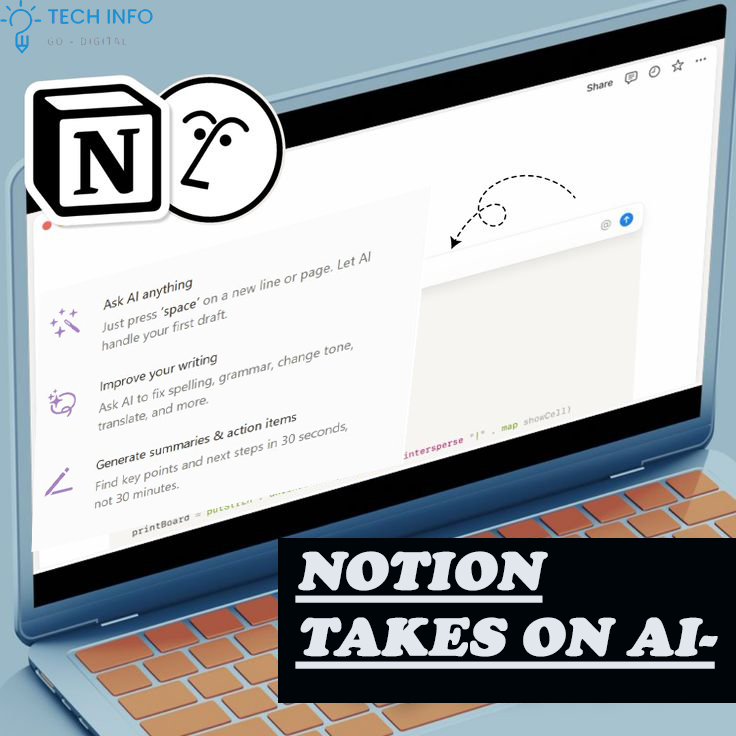
Notion Takes on AI Note-Takers Like Granola with Its Own Transcription Feature Notion Takes In the fast-evolving world of productivity tools, Notion has once again stepped up its game by introducing a built-in transcription feature, directly competing with-taking apps like Granola, Otter.ai, and Fireflies.ai. This move solidifies Notion’s position as an all-in-one workspace, eliminating the need for third-party integrations for voice-to-text conversions.Notion Takes But how does Notion’s new transcription tool stack up against dedicated AI note-takers? Let’s dive deep into its capabilities, limitations, and whether it can truly replace specialized apps. The Rise of AI-Powered Note-Taking Notion takes on AI-notetakers like Granola with its own transcription featureAI-driven transcription tools have become indispensable for professionals, students, and content creators. Apps like Granola (which focuses on AI-powered meeting summaries) and Otter.ai (known for real-time transcription) have dominated the space by offering: Notion, traditionally a text-first workspace, is now bridging the gap by integrating transcription directly into its platform—but with a slightly different approach.Notion Takes Notion’s New Transcription Feature: How It Works Notion’s transcription tool allows users to upload audio files (e.g., meetings, lectures, interviews) and convert them into text within a Notion page. Key features include: ✅ Accurate Speech-to-Text – Powered by advanced AI (likely Whisper or a similar model).✅ Seamless Integration – No need to switch between apps; transcripts live inside Notion.✅ Searchable & Editable – Full-text search and manual corrections.✅ Supports Multiple Languages – Useful for global teams. However, unlike Granola or Fireflies.ai, Notion does not yet offer: ❌ Real-time transcription (must upload pre-recorded files).❌ Automated meeting summaries (users must manually extract key points).❌ Speaker diarization (no automatic speaker separation). This makes Notion’s solution better suited for post-meeting documentation rather than live note-taking. Notion vs. Granola & Other AI Note-Takers Feature Notion Transcription Granola Otter.ai Fireflies.ai Real-Time Transcribe ❌ No ✅ Yes ✅ Yes ✅ Yes Speaker Identification ❌ No ✅ Yes ✅ Yes ✅ Yes AI Summaries ❌ No ✅ Yes ✅ Yes ✅ Yes Searchable Notes ✅ Yes ✅ Yes ✅ Yes ✅ Yes Works Inside Notion ✅ Yes ❌ No ❌ No ❌ No Free Tier Available ✅ (Limited) ✅ Yes ✅ Yes ✅ Yes Who Wins? Notion’s advantage? Centralization. If you already manage projects, wikis, and tasks in Notion, keeping transcripts in the same place is a major plus. Use Cases for Notion’s Transcription Limitations & Room for Improvement While Notion’s transcription is a strong first step, it lacks: 🔹 Live transcription (critical for real-time meetings).🔹 AI-powered insights (like sentiment analysis or action items).🔹 Deep integrations (e.g., auto-syncing with Zoom/Google Meet). If Notion adds these, it could dominate the AI note-taking space entirely. Final Verdict: Should You Switch? Notion isn’t fully replacing Granola or Otter.ai yet—but it’s getting closer. For now, power users might still need both. What do you think? Will you use Notion’s transcription, or stick with dedicated AI note-takers? Let us know in the comments! TL;DR Notion’s new transcription feature is great for storing and searching audio transcripts but lacks real-time AI note-taking capabilities. It’s best for post-meeting documentation, while apps like Granola and Otter.ai still lead in live transcription. Notion’s biggest advantage? Keeping everything in one workspace.
Google will pay Texas $1.4 billion to settle privacy lawsuits

Google’s $1.4 Billion Privacy Settlement with Texas: The End of Big Tech’s Data Wild West May 11, 2025 – In a landmark decision reshaping digital privacy norms, Google finalized a $1.4 billion settlement with Texas today, resolving allegations of systemic user tracking and biometric data exploitation. This record-breaking agreement – the largest state-level tech settlement in U.S. history – signals a dramatic escalation in regulators’ efforts to rein in Silicon Valley’s data practices. Let’s examine what this means for consumers, corporations, and the future of online privacy. I. The Core Allegations: Why Texas Drew First Blood The lawsuit centered on three primary claims of privacy violations spanning 2018-2024: Texas leveraged its 2009 Biometric Privacy Act – one of America’s strictest – to argue Google turned the state into a “24/7 surveillance colony.” With 93% of Texans using Google services daily, the state claimed damages of $8,200 per resident under statutory penalty calculations. II. Settlement Breakdown: More Than Just Money While the $1.4 billion headline figure dominates coverage, the 187-page consent decree introduces groundbreaking operational constraints: A. Financial Penalties B. Technical Reforms C. Oversight Mechanisms This goes far beyond Google’s 2022 $391.5 million multi-state location tracking settlement, establishing Texas as America’s de facto privacy enforcement leader. III. The Ripple Effect: Industry-Wide Tremors Within hours of the announcement, seismic shifts rocked the tech landscape: A. Market Reactions B. Regulatory Dominoes C. User Behavior Shifts IV. Expert Analysis: Three Paradigm Shifts Legal and tech analysts identify these transformational impacts: V. What Texans Gain – And Lose Immediate Benefits (2025-2026): Unintended Consequences: VI. Global Implications: A New Privacy World Order This settlement creates three irreversible trends: VII. The Road Ahead: Unresolved Questions The Privacy Reformation Begins Google’s Texas settlement marks more than a legal resolution – it’s the opening salvo in a global battle over digital self-determination. As other jurisdictions replicate Texas’ template, users finally gain leverage in the data economy. Yet the path forward remains fraught with technical complexities and unintended consequences. One truth emerges clearly: the era of surveillance capitalism’s free ride is over, and the bill has come due.
Microsoft employees are banned from using DeepSeek app, president says
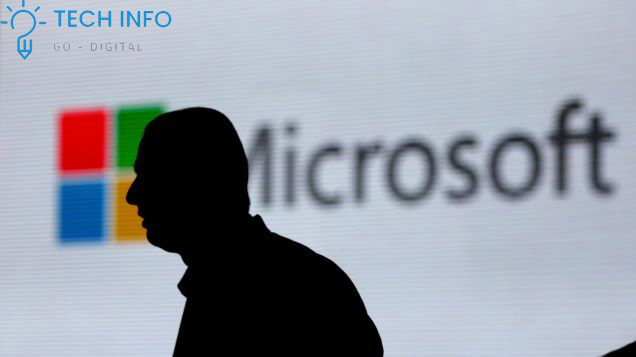
Introduction In a surprising move, Microsoft President Brad Smith recently announced that Microsoft employees are banned from using the AI-powered DeepSeek app, a rising competitor in the artificial intelligence space. This decision has sparked debates about corporate restrictions, AI competition, and the future of workplace technology policies. But why would Microsoft prohibit its employees from using an external AI tool? What does DeepSeek offer that might concern Microsoft? And what does this mean for the broader AI industry? In this blog post, we’ll explore: What Is DeepSeek? DeepSeek is an advanced AI-powered search and productivity tool developed by a Chinese AI research company. It offers capabilities similar to OpenAI’s ChatGPT and Microsoft’s own Copilot, including: DeepSeek has gained traction due to its multilingual support, cost-effectiveness, and strong performance in technical tasks, making it a viable alternative to established AI models like GPT-4 and Gemini. Why Is Microsoft Concerned? Microsoft has heavily invested in AI through its partnership with OpenAI, integrating AI into products like Copilot, Azure AI, and Bing Chat. The ban on DeepSeek suggests that Microsoft sees it as a competitive threat, possibly due to: Microsoft’s Official Reasoning for the Ban Brad Smith cited security and compliance concerns as the primary reason for prohibiting DeepSeek. Microsoft, like many tech giants, has strict policies on data handling and third-party software usage. Key Concerns Behind the Ban: This move aligns with similar restrictions at companies like Apple, Google, and Amazon, which also limit employee use of external AI tools. Broader Implications for AI Competition Microsoft’s ban on DeepSeek highlights the increasingly competitive AI landscape. Here’s what this means: 1. AI Wars Are Heating Up 2. Employee Access to AI Tools Will Be Restricted 3. The Debate Over Open vs. Closed AI Ecosystems This tension will shape how AI evolves in enterprise settings. Ethical and Security Concerns with Third-Party AI Beyond competition, Microsoft’s decision reflects broader ethical and security dilemmas in AI adoption: 1. Data Privacy Risks 2. Compliance and Legal Issues 3. AI-Generated Misinformation and Bias Will This Ban Hurt or Help Microsoft? Arguments in Favor of the Ban: ✅ Enhanced Security – Prevents potential data breaches via unapproved AI.✅ Workflow Consistency – Ensures employees use Microsoft’s integrated AI tools.✅ Competitive Edge – Limits rival AI adoption within the company. Arguments Against the Ban: ❌ Stifles Innovation – Employees may miss out on useful AI advancements.❌ Overly Restrictive – Could push talent toward more flexible companies.❌ Hypocrisy Concerns – Microsoft promotes AI openness but restricts alternatives. The Future of AI in the Workplace Microsoft’s DeepSeek ban is just the beginning. Here’s what to expect: 1. More AI Restrictions Across Industries 2. Rise of Enterprise-Grade AI Solutions 3. Employee Training on AI Best Practices A Sign of AI’s Growing Pains Microsoft’s ban on DeepSeek underscores the challenges of AI adoption in corporate environments. While security and competition are valid concerns, overly restrictive policies could hinder innovation. The key takeaway? AI is powerful but comes with risks—companies must strike a balance between security, productivity, and openness.
NSO Group must pay more than $167 million in damages to WhatsApp for spyware campaign

NSO Group Ordered to Pay $167M to WhatsApp: A Watershed Moment in the Battle Against Commercial Spyware The $167 million judgment against NSO Group in its legal battle with WhatsApp marks more than a financial penalty—it’s a seismic shift in how democracies confront the shadowy world of mercenary surveillance. On May 7, 2025, a U.S. federal court finalized the ruling, capping a six-year saga that exposed how private companies weaponize zero-day exploits to infiltrate the devices of journalists, activists, and politicians. This case isn’t just about reparations; it’s a referendum on the ethics of privatized cyber warfare and a warning shot to the $12B global surveillance-for-hire industry. The Anatomy of a Digital Betrayal: How NSO’s Pegasus Exploited WhatsApp In April 2019, NSO Group allegedly deployed its infamous Pegasus spyware through a vulnerability in WhatsApp’s video call feature. Here’s how the attack unfolded: WhatsApp’s parent company Meta responded by patching the flaw within 72 hours—but the breach exposed systemic risks in end-to-end encryption architectures. NSO’s Defense Playbook: Sovereign Immunity and the “Dual-Use” Dodge NSO Group’s legal strategy relied on two controversial arguments: The court rejected both arguments, with Judge Gonzalez-Rogers stating: “A private entity cannot outsource constitutional violations to evade accountability. The cloak of national security does not absolve contractors of their role in enabling digital tyranny.” The $167M Breakdown: How Damages Were Calculated The penalty reflects a novel application of the Computer Fraud and Abuse Act (CFAA) and Wiretap Act: Category Amount Rationale Punitive Damages $102M Intentional bypass of encryption; reckless disregard for human rights Compensatory Damages $48M WhatsApp’s costs for forensic audits, security overhauls, and PR crisis management Statutory Penalties $17M $10k per violation under Wiretap Act (1,400+ devices) Notably, the court allowed WhatsApp to pursue discovery into NSO’s client list—a move that could unmask authoritarian regimes’ reliance on Western-backed spyware firms. The Ripple Effects: Three Industries Forever Changed 1. Surveillance Tech’s “Wild West” Era Ends 2. Big Tech’s New Accountability Standard WhatsApp’s victory pressures other platforms to: 3. The Rise of Anti-Spyware Coalitions A consortium of encrypted apps (Signal, Threema, Wickr) launched the Secure Communications Alliance in Q1 2025, featuring: Ethical Quagmire: Can Spyware Ever Be “Responsible”? NSO’s case reignited debates about regulating dual-use technologies: What’s Next for NSO—And Its Victims? Despite the ruling, challenges remain: The Judgment as a Blueprint for Digital Justice The WhatsApp-NSO verdict establishes critical precedents:
Substack launches audio-only livestream feature

Substack Launches Audio-Only Livestream Feature: Reinventing Creator-Audience Dynamics in the Post-Podcast Era The digital content landscape is undergoing its most radical transformation since the rise of YouTube and TikTok, and Substack—a platform synonymous with email newsletters—is making a bold play to lead the next wave. On May 6, 2025, Substack announced the global rollout of its audio-only livestream feature, a move that merges the intimacy of podcasting with the urgency of real-time engagement. But this isn’t just another tech update; it’s a strategic gambit to redefine how creators monetize, audiences consume, and communities interact in an era oversaturated with content. Let’s unpack why this launch matters and what it signals for the future of digital media. From Newsletters to Neo-Radio: Substack’s Evolution Substack’s journey began as a sanctuary for writers fleeing algorithmic feeds and ad-driven models. By 2023, it had already expanded into video essays and pre-recorded podcasts. The introduction of live audio streaming marks its most audacious pivot yet. Unlike Spotify’s Anchor or Patreon’s static audio posts, Substack’s livestream tool is designed to work in tandem with its existing infrastructure: This isn’t just a feature—it’s an ecosystem play. By layering live audio atop its subscription engine, Substack positions itself as a one-stop shop for creators who want to build and monetize deep, multi-format relationships with audiences. The Audio Renaissance: Why Now? Audio’s resurgence isn’t accidental. In a post-TikTok world, audiences are fatigued by visual overload. Pre-2025 data reveals: Substack’s move capitalizes on these trends while addressing creator pain points. Traditional podcast platforms like Apple Podcasts or Spotify take hefty revenue cuts (up to 30%) and offer limited direct monetization tools. Substack flips the script: creators keep 90% of subscription revenue, and now, live audio becomes a premium perk to justify $5–$20/month tiers. Case Study: Early Adopters Rewriting the Rules Substack’s beta testers—a mix of journalists, niche educators, and indie musicians—have already showcased the feature’s disruptive potential: 1. The Investigative Journalist Sarah Lin, an award-winning reporter covering AI ethics, uses live audio streams to: Result: A 40% spike in conversions for her $15/month “Insider Access” tier. 2. The Indie Musician Jake Rivera, a lo-fi hip-hop artist, streams live beat-making sessions where subscribers request samples or rhythms. Post-stream, he packages the finished track as a downloadable NFT—a perk for top-tier members. 3. The Micro-Community Builder Dr. Priya Rao, a historian focusing on Southeast Asian folklore, hosts live storytelling nights with rotating guest speakers from her subscriber base. These streams double as oral history archives, later transcribed into Substack post The Strategic Calculus: Substack vs. The Titans Substack isn’t just competing with newsletter platforms like Ghost or Beehiiv—it’s now tangling with audio giants: Platform Monetization Model Creator Cut Live Audio Tools Substack Subscription-first 90% Paid tiers, Q&A, transcripts Spotify Live Ad-supported 50–70% Basic interaction Twitter Spaces Free $0 Super Follows (limited) Patreon Hybrid (subscription) 88–95% Pre-recorded audio only Substack’s edge lies in its bundled value proposition: creators can weave live audio into a broader content strategy without fragmenting their audience across platforms. Challenges Ahead: The Roadblocks Substack Must Navigate The Future of Substack: Predictions for 2026–2030 A New Paradigm for the Attention Economy Substack’s audio livestream launch isn’t merely a feature update—it’s a declaration that the future of content isn’t about platforms but ownership. By giving creators the tools to own their audience relationships and revenue streams, Substack is challenging the extractive models of social media giants. In 2025, as AI-generated content floods the web, the human touch of live audio—raw, unedited, and communal—might just be the differentiator that saves (and redefines) digital creativity.
Spotify now shows how many times people listened to podcast episodes
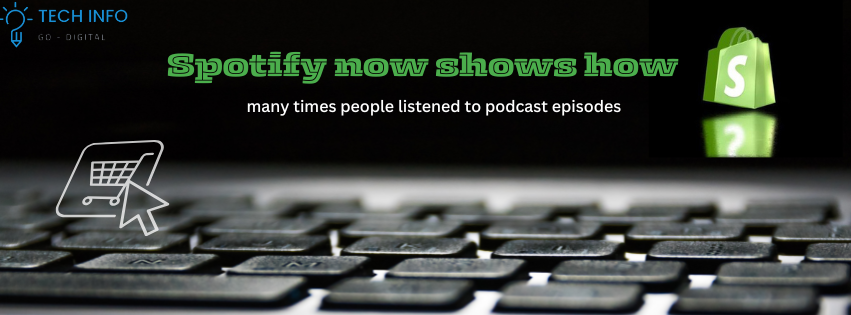
Spotify Now Displays Podcast Episode Plays: What It Means for Creators and Listeners In a move that’s generating buzz across the podcasting world, Spotify has officially started showing the number of times people have listened to individual podcast episodes. This update brings a new layer of transparency to the platform and signals a significant shift in how podcast performance is measured and perceived. Whether you’re a casual listener, a podcast superfan, or a creator trying to grow your audience, this feature could change how you experience and evaluate content on Spotify. In this blog post, we’ll explore what this change means, why it matters, and how it could shape the future of podcasting Why Is This a Big Deal? Until now, Spotify has withheld granular play counts for most podcasts, only providing general analytics to creators through Spotify for Podcasters. Listeners had no way of knowing how popular a specific episode was — only the podcast’s overall popularity was vaguely inferred through follower counts and star ratings. By adding visible episode-level play counts, Spotify is introducing a feature long standard on platforms like YouTube and TikTok. For creators, this is a welcome evolution. It offers social proof that can validate the quality of a specific episode or series. For listeners, it provides a way to quickly identify the most popular or impactful episodes within a podcast, especially when exploring new shows. Key Benefits for Podcast Creators 1. Improved Discoverability Popular episodes will now likely attract even more attention. When users can see that an episode has 1 million listens, they’re more inclined to click and give it a try. This natural visibility boost is great for older episodes that may still offer timeless value. 2. Data-Driven Growth While creators already had access to back-end analytics, seeing the numbers publicly helps them benchmark against others in their niche. It can inspire content strategy pivots based on what resonates most with wider audiences. 3. Attracting Sponsors and Collaborations A visible episode play count becomes a public metric that creators can use to negotiate sponsorship deals and collaborative opportunities. It’s no longer just about total downloads — episode-level impact now plays a bigger role in monetization. 4. Social Credibility In the world of content, popularity often signals quality. Creators who consistently produce high-play episodes can leverage that social proof to build authority in their niche. What It Means for Listeners 1. Easier Episode Selection If you’re diving into a podcast with 200 episodes, the play counts can guide you toward the most engaging or viral content. It takes the guesswork out of finding the “best” episodes. 2. Community Insight Seeing what others listen to creates a subtle sense of community. If thousands of people enjoyed a particular episode, there’s a good chance you might too. 3. Better Recommendations It’s possible that Spotify will eventually integrate play count data into its algorithmic recommendations, which means the platform could serve up more widely liked content tailored to your preferences. How Spotify Displays Episode Plays Currently, Spotify displays the number of plays beneath the episode title in a smaller font, typically listed as “10K plays,” “100K plays,” or “1M plays.” These numbers represent unique plays — meaning Spotify counts one play per listener device, not total streams from the same user. This avoids inflated stats and provides a more accurate reflection of episode popularity. It’s worth noting that this feature is gradually rolling out, so you may not see play counts on all episodes or regions immediately. Spotify has confirmed that the metric will apply to episodes released after a certain date, and older episodes may not show historical plays if they predate this system. The Impact on the Podcast Industry Spotify’s decision isn’t just a UI update — it’s a potential industry disruptor. With podcasting becoming an increasingly competitive space, play counts could affect everything from chart rankings to advertising rates and even platform loyalty. Other platforms like Apple Podcasts and Google Podcasts may feel pressured to offer similar transparency, especially if creators begin favoring Spotify for its openness. In essence, Spotify is treating podcasting more like video content, adopting lessons from platforms like YouTube where performance transparency is the norm. Concerns and Criticisms While the update has mostly received positive feedback, there are a few concerns: 1. Pressure on Smaller Creators Some podcasters worry that visible low play counts could turn away potential listeners. Much like new YouTubers who struggle to gain views early on, emerging podcasters may feel disheartened. 2. Favoring Popularity Over Quality With visible metrics, listeners may gravitate only toward the most popular content, potentially overlooking niche or underrated gems. This may unintentionally shift focus from diverse voices to mainstream-heavy hits. 3. Data Misinterpretation Casual users might not understand what “10K plays” really represents — is that good or bad for a niche show? Without context, play counts could be misleading. Spotify will need to address these issues either through education or through complementary features like category-specific charts and curated recommendations. Final Thoughts Spotify’s move to display podcast episode play counts is more than a cosmetic change — it reflects a broader shift toward transparency, community influence, and data-driven content discovery. As podcasts continue to explode in popularity, this update equips both listeners and creators with tools to make smarter decisions. While it might create short-term pressure for new creators, the long-term effect will likely be positive. Better data means better content, and better content means more engaged audiences. As the lines blur between podcasting and other forms of digital media, expect more features like this to roll out across platforms. Spotify is betting big on the future of podcasts — and with this move, it’s inviting the rest of the world to watch (and measure) along.

